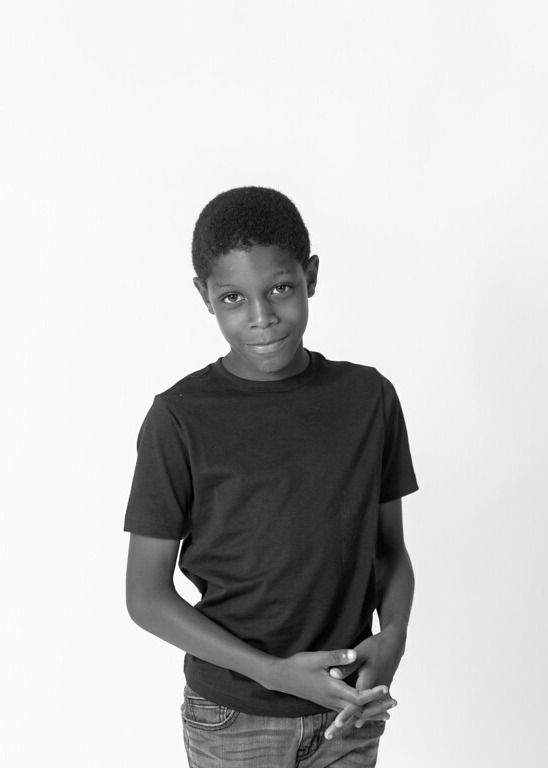
…they assume he must be headed for trouble as a little Black boy.
When in reality, he loves to help people, he is strong, and he is caring. He is genuine.
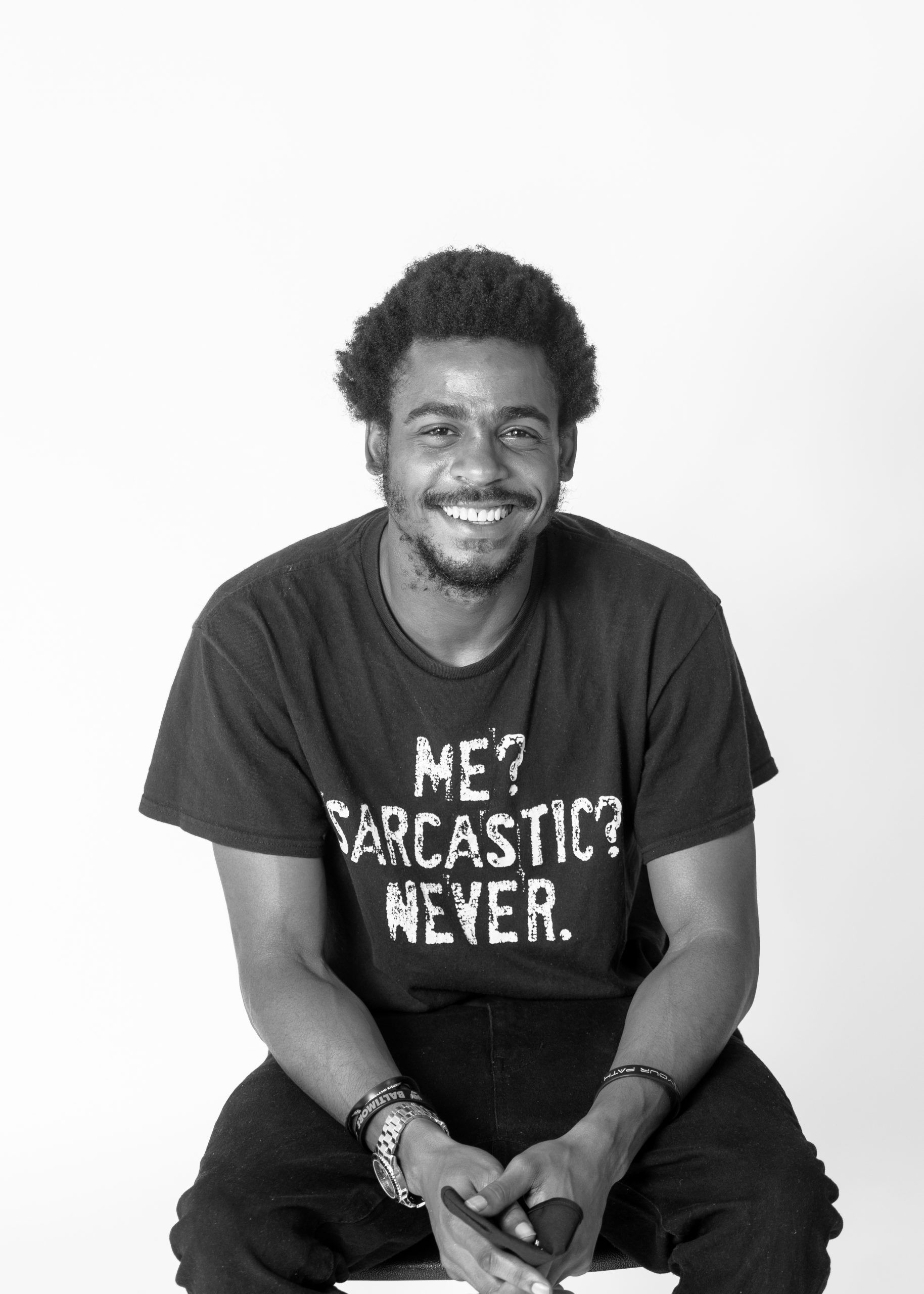
They stereotype me as a thug, drug dealer, or troublemaker who is up to no good.
When in reality, I get joy from bringing others joy and making others smile…
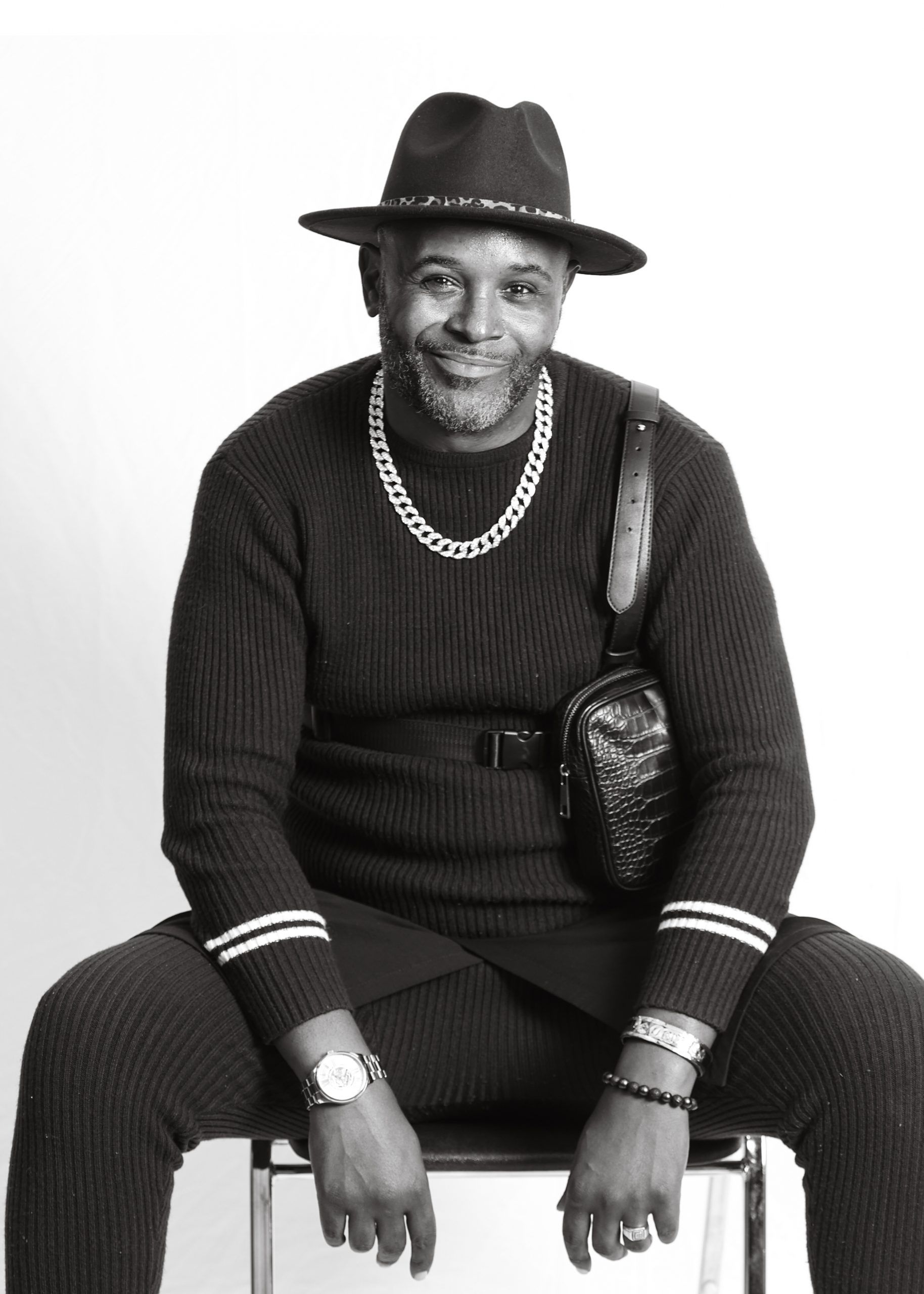
…they assume I’m incapable of doing better than my past.
When in reality, I am moving toward pursuing licensure to continue to help people. I am capable of doing anything no matter the hand I was dealt.
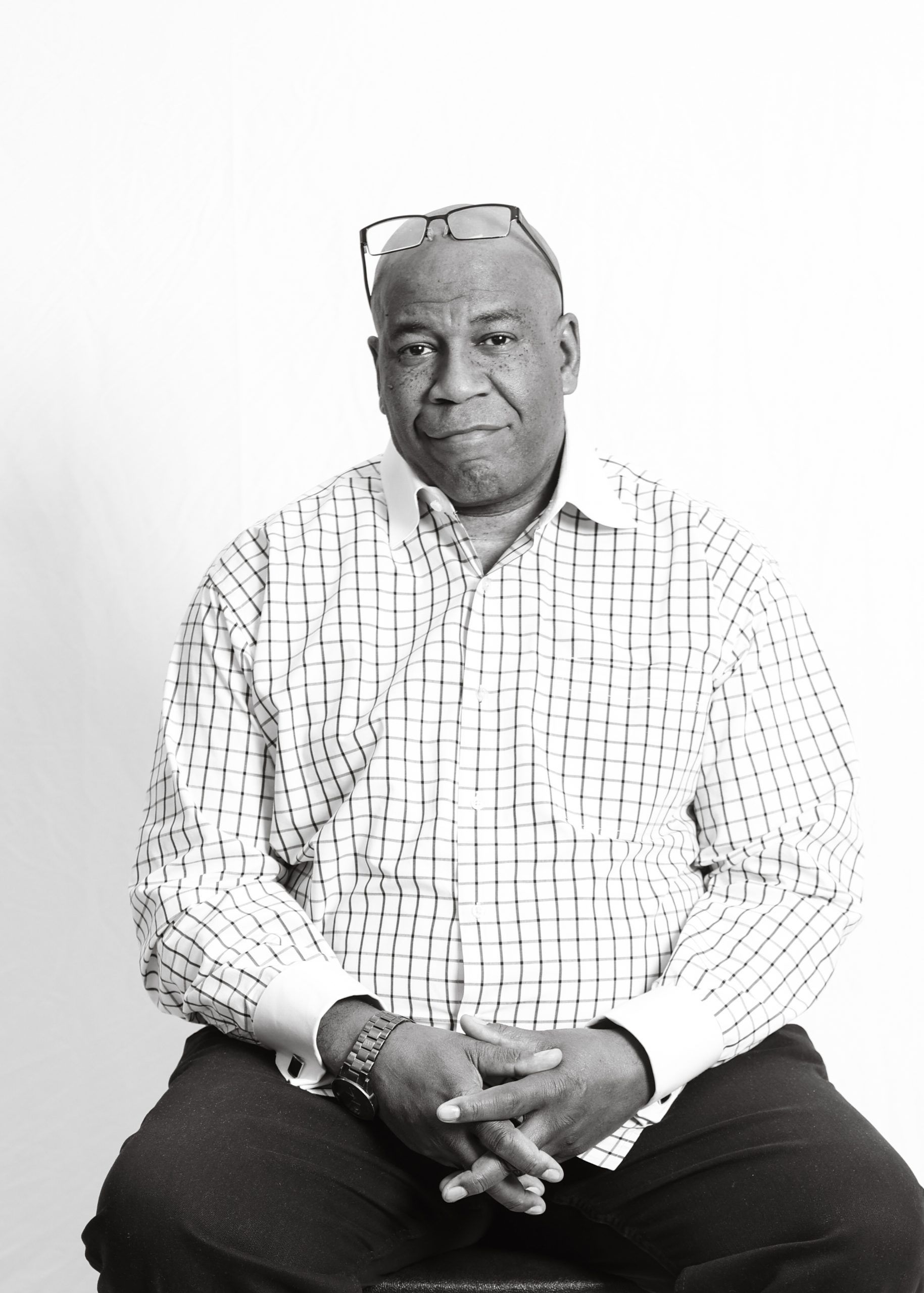
They assume I am making bad decisions and getting caught up in the wrong place at the wrong time.
When in reality, I am resilient. I am most proud of being 63. I have overcome incarceration and I experience freedom from drug addiction.
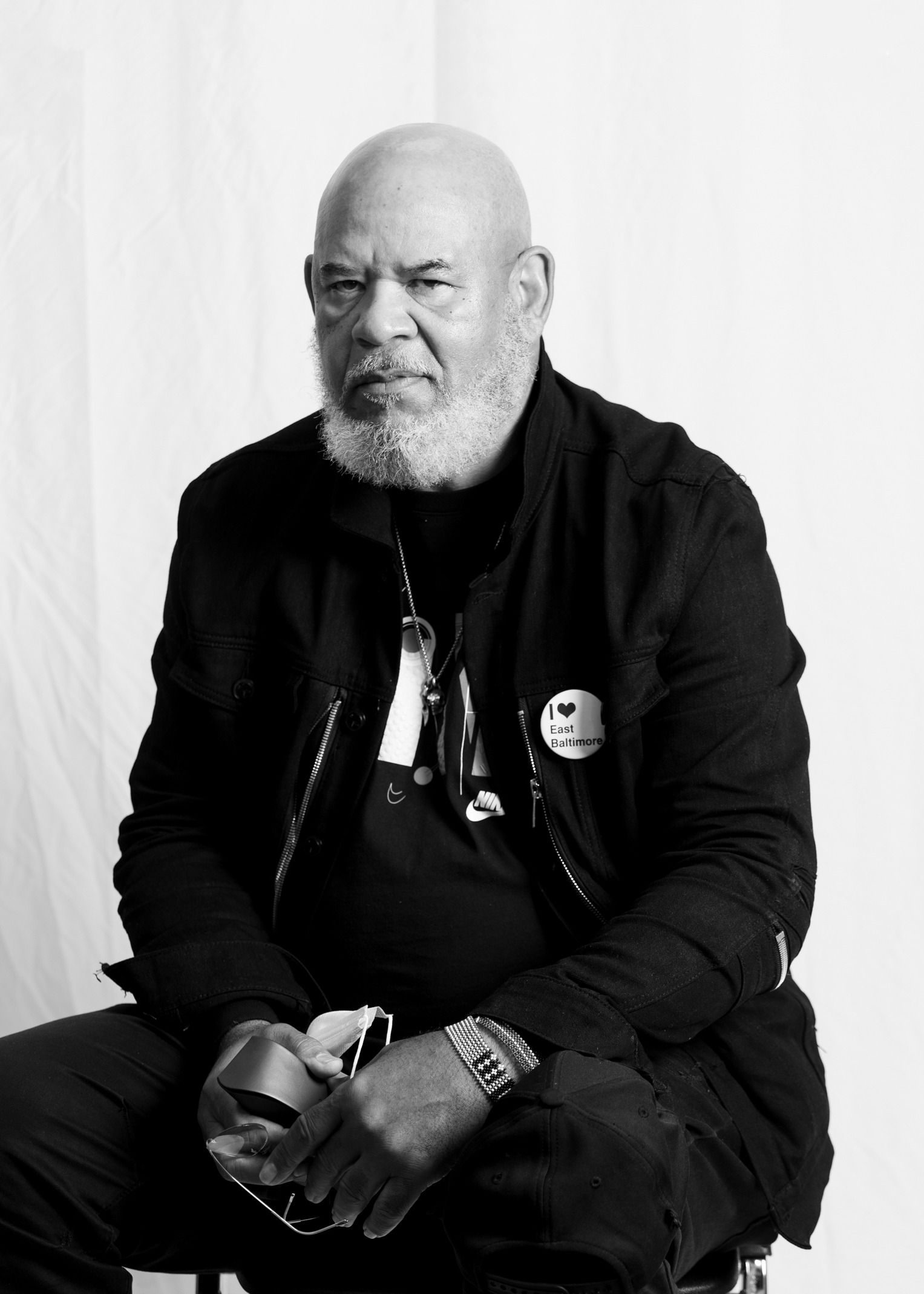
…they assume my world is small and the possibilities of my life, narrow.
When in reality, I am a proud Black man from East Baltimore–a gentle giant—who has travelled globally, loves golfing and giving back to my community. I have taught my own children to dream and I take great joy in mentoring other young people.
IN ALL WAYS HUMAN
Campaign launches to disrupt dehumanizing narratives about Black boys and men
In 2020, Dr. Jocelyn Smith Lee was awarded a highly competitive $100,000 Grand Challenge Award through the Bill and Melinda Gates Foundation. Her winning proposal – one of 28 selected from over 1,200 – sought to disrupt dehumanizing narratives of Black boys, men, and families and reclaim their humanity.
Now, the faculty member in Human Development and Family Studies and her team have launched their narrative change campaign, In All Ways Human, in Baltimore, Maryland. The results of their work bring hope in the aftermath of Covid, skyrocketing gun violence, and the visible loss of Black lives to police violence.
“This right here will change the perspective on how people look at us,” says Kevin Harvey, Jr., participant and community advisor. “Every portrait up here is gonna change the world.”
Work to reclaim the humanity of Black boys and men through visual storytelling and narrative change comes to fruition with last year’s launch of the In All Ways Human campaign.
→ Baltimore mural of the living
→ Starbucks and Johns Hopkins impacts
→ a student’s research journey
Centering Black Voices
Smith Lee, who has personally lost loved ones to gun violence, has centered her work on examining how violence affects the health and development of young Black men. The storytelling campaign grew out of a need she uncovered through her own doctoral research: to help Black boys and men navigate issues of trauma, violence, loss, and healing.
“My Centering Black Voices research program aims to affirm humanity, prevent violence, and promote healing in the lives of Black boys, men, and families through research and action that advances racial equity,” she says. In addition to creating loss and grief support groups, her work has led to policy recommendations and community mental health interventions. And yet, she recognized the need to do more.
“I wanted to amplify the voices of Black boys and men,” says Smith Lee, “to co-create a platform where they could show up as they wished and control the stories told about their lives.”
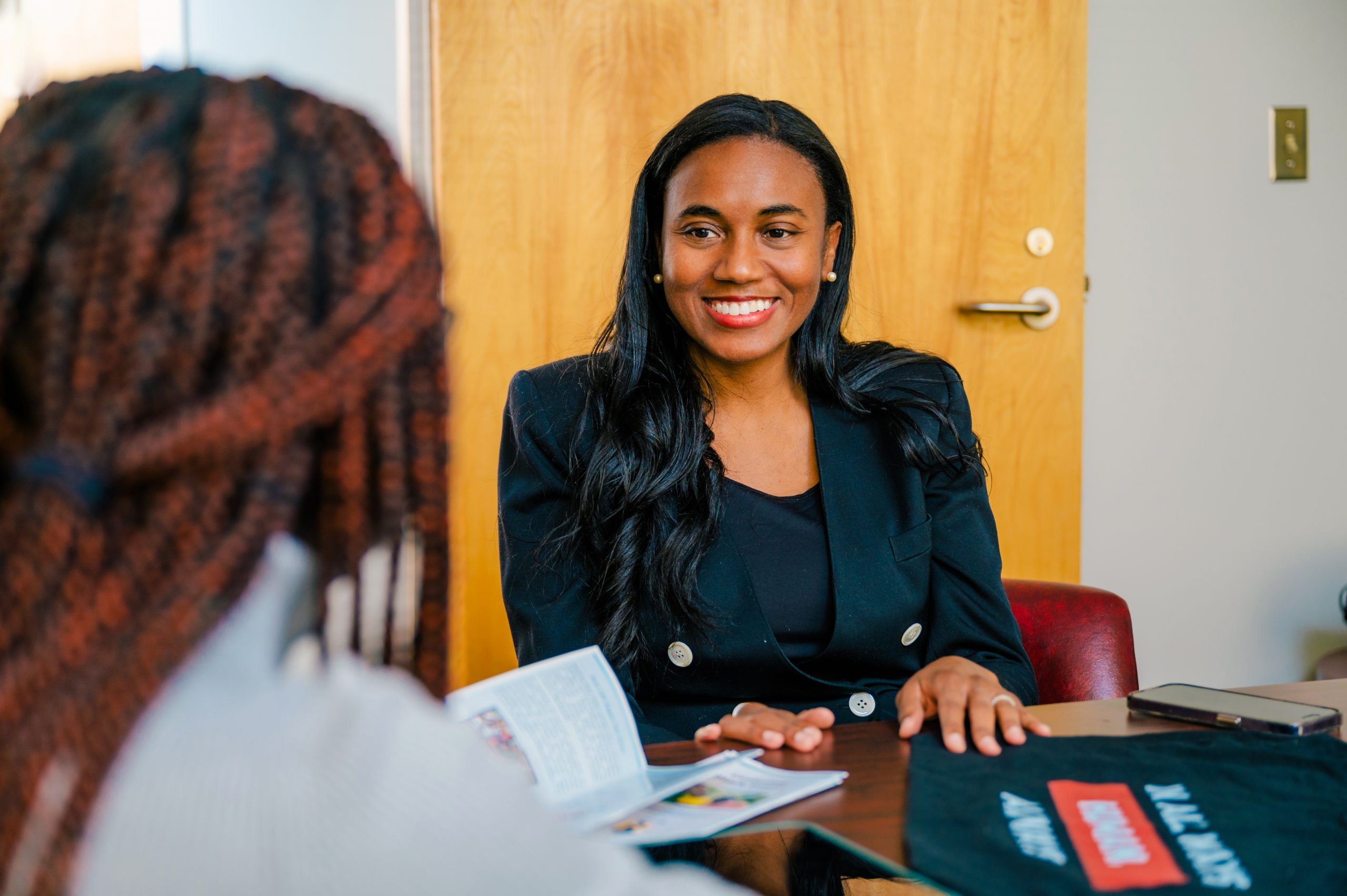
Storytelling for Change
With a goal of shifting the narrative and getting in the ear of the public and policymakers, Smith Lee teamed up with photographer Zizwe Allette and creative consultant Zun Lee, plus a host of community advisors and students. Allette and Smith Lee are longtime collaborators. They met at the Historic East Baltimore Community Action Coalition’s Youth Opportunity Center, where Smith Lee’s research began over ten years ago and Allette is a GED instructor.
Their resulting In All Ways Human project relies on various mediums of storytelling to transform how Black boys and men are seen.
So far the team’s efforts, supported by Gates and Robert Wood Johnson Foundation funding, have culminated in an online repository of stories with photography and video, a life-size mural installed in East Baltimore, a Starbucks exhibit, and digital ad campaigns throughout the city.
“We want to spread the simple and profound truth that Black boys, men, and families are always and in all ways human,” says Smith Lee. “Whether a toddler, like my daughter, or young adult, or young at heart, whether college educated or GED-pursuing, community leader or celebrity, we are deserving of dignity, safety, care, and opportunity.”
Mural of the Living
Fifty life-size intergenerational portraits of Black boys and men, ranging from ages 2 to 77, are mounted side-by-side along the 1100 block of North Wolfe Street in East Baltimore. This mural is currently installed on a former elementary school wall, opposite a redeveloped neighborhood near the campus of Johns Hopkins Medical Center.
“We are calling it a mural of the living, which is an opportunity to center Black boys and men in life, not just in death,” says Smith Lee.
“Too often the stories that catch the attention of the media are those that are traumatic and dehumanizing in nature. These portraits allow Black boys and men the opportunity to show up as they wish to be seen and to push back against those mugshot images that circulate the nightly news.”
The team held a mural dedication on June 5, 2022, to close National Gun Violence Awareness weekend and to coincide with Men’s Health Month. Around 100 people attended, with many of the participants bringing their families to see their portraits.
I’m proud of what we accomplished,” says Leon Fountain III, a participant and community advisor. “Hopefully the city can come together. Hopefully we can destroy the image that society helped us create … for us. As soon as we destroy it, we’ll be better off, the whole world would.”
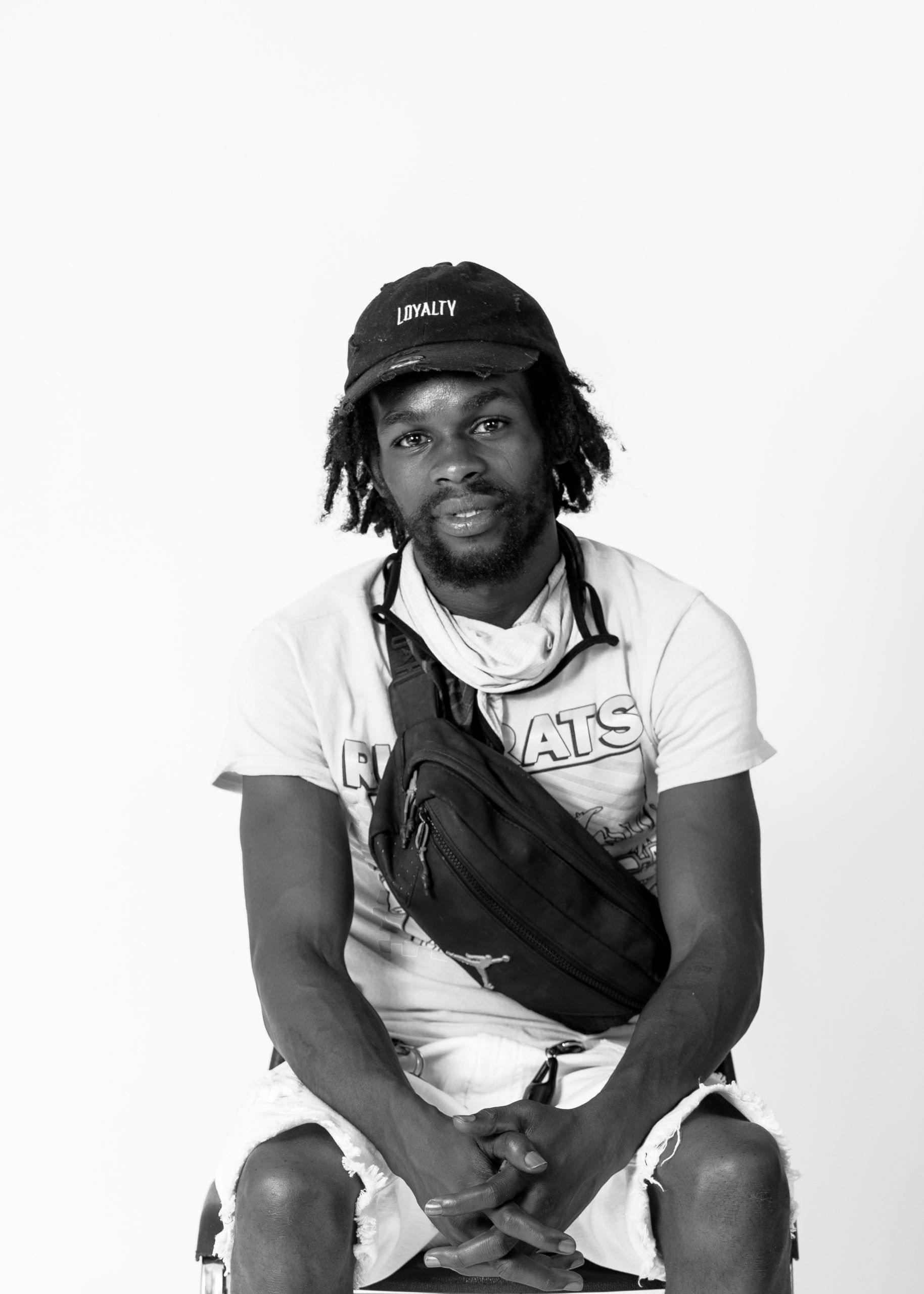
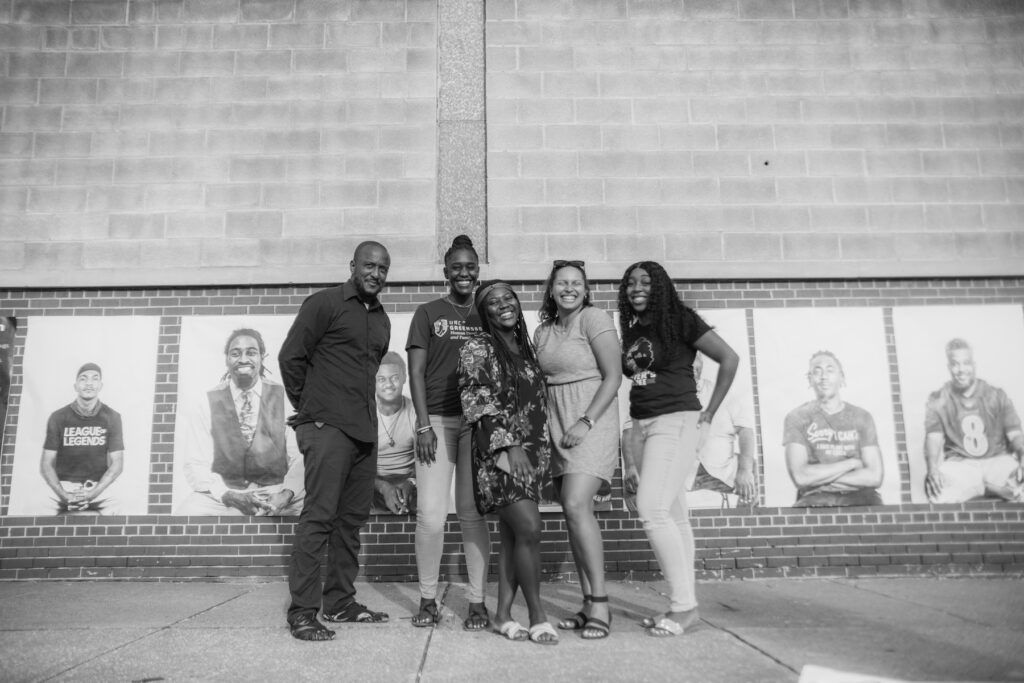
Allette and members of the UNCG Centering Black Voices Lab planning the exhibit in Baltimore
Starting a Conversation
On June 3, 2022, a pop-up exhibit was added to a Starbucks just one block from the mural site and two blocks from the Youth Opportunity Center. It features 10 life-size portraits in the windows.
“I’m stumbling over my words because coming in here and seeing this, I almost cried,” says Harvey, who is one of those pictured. “To see it in a place like Starbucks, that’s amazing. It’s overwhelming, really.”
The exhibit is already creating impact in the community. The Starbucks operator allowed the pop-up to become a year-long exhibit – and he’s now donating food to a shelter above the youth center.
The sites are also meaningful for their proximity to the Johns Hopkins Medical Center. The relationship between the local Black community and Hopkins is complicated, Smith Lee says. While it offers economic opportunity and access to health care, the center is also as a reminder of displaced Black residents and evokes mistrust related to its treatment of Black people.
“The physical presence of the mural images on that wall is an intentional placement of Black boys and men in a space from which they have been pushed out. It’s also an invitation to Hopkins employees who park nearby or live in high rises across the street to engage with Black boys and men as their neighbors and not social problems,” says Smith Lee.
Nationally, Starbucks has been a site of criminalization and displacement for Black males too, and Smith Lee hopes the cafe exhibit will bring patrons – including customers affiliated with nearby Hopkins – into the conversation. “That space should facilitate dialogue with Hopkins employees, trainees, and patients.”
In addition to working on a documentary about the project and social media efforts, the team is now in conversation with Cincinnati leaders about replicating the project concept there. “I’m excited to grow the work in Baltimore, but scaling nationally, that is the goal,” Smith Lee says.
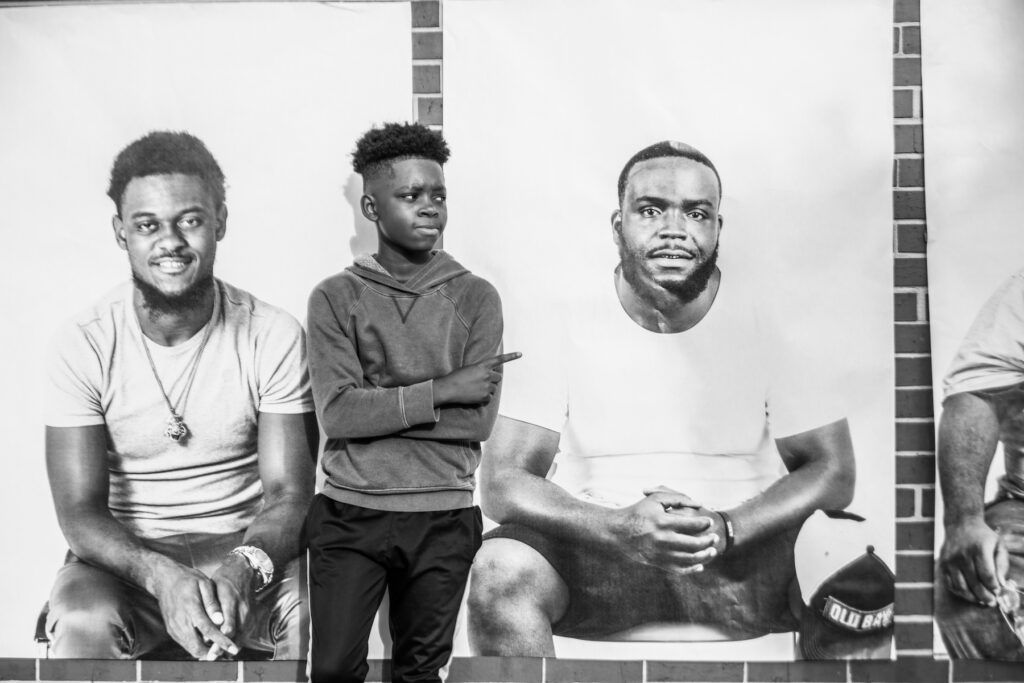
On his way to play in a nearby park, Kevin Oliver, Jr.’s son was surprised – and proud – to see a portrait of his dad.
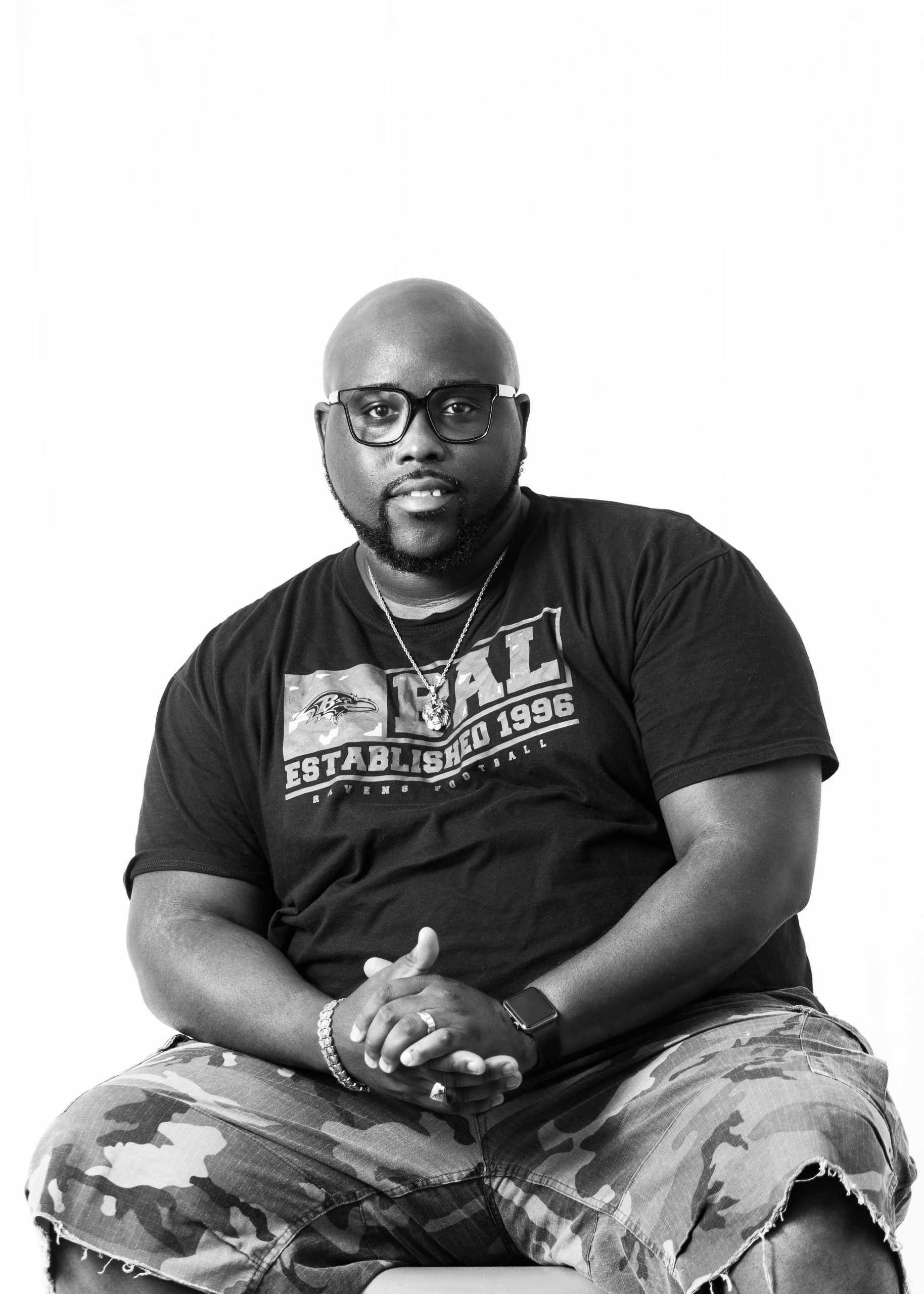
“When people look at me, they assume I won’t amount to anything because I was born in poverty,” says participant and community advisor Eric McKnight. “I have worked so hard. I earned my GED. I have a steady job. I just got married to my high school sweetheart. I love God … I want to see all Black boys and men succeed.”
PATHWAYS TO HEALING
In All Ways Human project offers students unique opportunities for impact
Doctoral student Youselene Beauplan says she’s always had a heart for underserved people.
“I started volunteering with the Boys & Girls Clubs of Broward County the summer after eighth grade, and I’ve been invested in working with youth ever since,” says Beauplan. “They tug at my heart. It feels like this is what I’m supposed to be doing.”
Beauplan’s undergraduate coursework in adverse child experiences sparked her interest in studying youth trauma and led her to graduate school at UNCG. Her master’s thesis investigated the impact of homicidal bereavement on young Black men and their life trajectories. Her passion for helping vulnerable and marginalized youth deal with trauma and loss connected her with Smith Lee.
“Youselene brings unique passion to the work because of her own lived experiences and her commitment to improving the health and well-being of Black boys, men, and families, including the ones she’s a part of,” says Smith Lee.
Beauplan has filled various roles for In All Ways Human, from social media coordinator to representing the project at conferences. “The most rewarding piece was engaging with the participants,” she says. “It was beautiful to see their reactions to the portraits.”
In addition to her work with Smith Lee’s project, she is conducting her doctoral research on emotion socialization among Black father-son dyads.
“Our mental and emotional health impact how we perceive things and how we act,” she says. “I want to study how Black adolescents and emerging adults can be empowered to experience a full range of emotions.” The study will focus on cultural assets in Black families.
“We have the potential to help youth navigate trauma and chronic stress – not just to survive it, but to thrive,” she says. “I love connecting with people and thinking through real world implications and applications of my work.”
Ultimately, the UNCG Minerva Scholar and first-generation student knows she wants to work directly with youth, families, and communities.
“I want to conduct research and do program evaluation and policy work. Having a social justice lens is important to me, and I see myself at the intersection of scholar, practitioner, and advocate.”